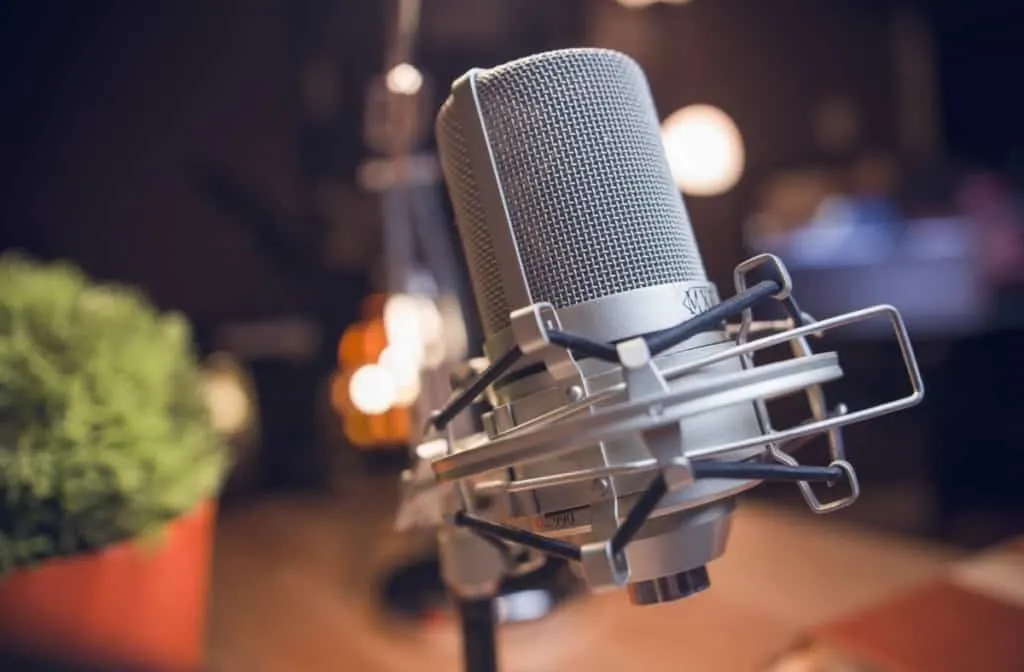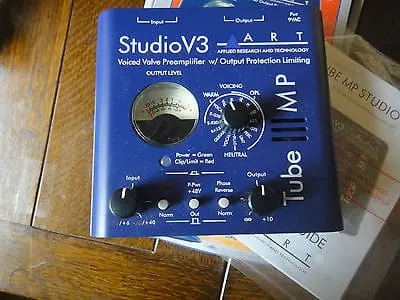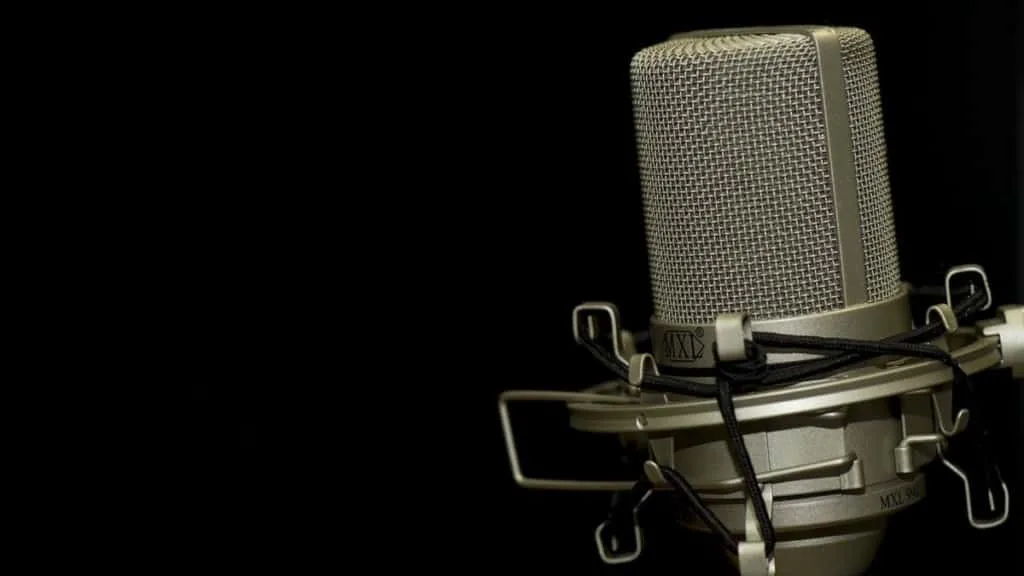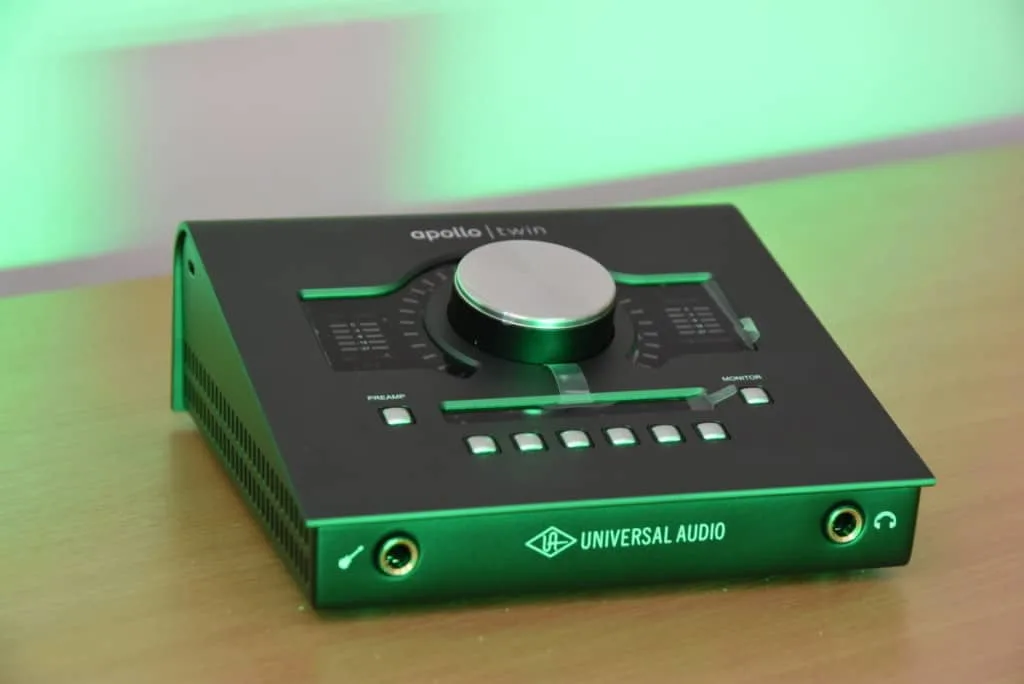Microphone preamps are devices commonly used for sound engineering and can be found in most recording studios. Whether or not they are necessary for recording or performing live is an important question for musicians and sound engineers.
Are mic preamps necessary?
Microphone preamps are necessary for ensuring that the input signal has sufficient strength to be received by a mixing console for recording. However, some microphones have inbuilt circuitry that can perform this function without the need for an external preamp. The microphone preamp boosts the microphone signal until it is strong enough to be received by the recording device.
Most microphones produce a signal that is too weak to be transmitted to recording devices like mixing consoles.
After reading the information in this detailed article, you’ll know exactly when and why a mic preamp is necessary.
This topic may seem straightforward, but it requires further inspection.

What Makes A Mic Preamp Necessary?
Mic preamps provide musicians and recording engineers with an easy and convenient way to improve the sound of vocal and instrument tracks.
The impact that mic preamps have on a recording is undeniable, and this is especially evident when compared to the quality of recording provided by an audio interface or mixer.
Microphone preamps are necessary if you want to get the best possible quality of the recording, and also if you have a specific sound in mind. There is a multitude of mic preamps available, each with slightly different qualities and characteristics. Some are specifically designed to be compatible with certain instruments, types of microphones, or vocal styles.
Of course, it’s possible to record with a microphone without using a preamp, so technically, they are not a necessity. However, if you want to capture the clearest, best quality recordings, then one could argue that they are indeed a required piece of equipment.
Take a look at this video that explains what a microphone preamp is.
Microphone Preamps generally have several additional features that provide you with more options when it comes to recording audio. Although these features vary from model to model, it’s very likely that you will find the following on a mic preamp:
- XLR Jack Inputs
- XLR Jack Outputs
- Onboard A/D Converter
- Low-Cut Filter
- Phantom Power
- A Stereo Link
Let’s take a look at each of these features in closer detail.
XLR Inputs & Outputs
The majority of microphone preamps use XLR jack inputs to hook up to microphones. This is the industry-standard connector that almost all microphones facilitate. XLR cables are convenient because they come in a variety of sizes, and they are reliable in terms of their performance.
Mic preamps sometimes also offer ¼ inch line-level inputs or ¼ inch TRS jack outputs. These connectors allow you to directly record through the preamp into a DAW, which is a popular method in the age of home-studios and digital recordings.
Onboard A/D Converter
Onboard A/D converters are featured on top-end mic preamps. The purpose of these devices is to convert analog audio into digital so that it can be instantly processed by an audio interface and a DAW.
Low-Cut Filter
Another common and very useful feature included with most mic preamps is the low-cut filter.
As the name suggests, this allows you to reduce the presence of low-end bass frequencies from your recording, before it enters into the interface of DAW. These frequencies usually fall below 150Hz.
Why is a low cut filter necessary on a mic preamp?
Well, many instruments and vocal take fall victim to unwanted low-end rumble, noise, or plosives from the microphone. By using a low-end filter at the preamp stage, you eliminate these issues and save yourself the time and effort of either having to re-record the take or try to remove the unwanted low-end using EQ, which can be an arduous process.

Phantom Power
Another reason that mic preamps are necessary is that almost all of them provide you with phantom power. Phantom power is required when recording with any condenser mic. Without it, the condenser simply won’t record any audio.
Mic preamps supply you with 48-volt phantom power which can then be used to power condensers or ribbon mics in some cases. The power is transmitted through the XLR cable into the microphone by simply pressing a button to turn it on.
Check out my article on phantom power. You can read it here.
Stereo Link
Stereo links are a useful addition to some mic preamps. Usually, there will be a switch fitted on the preamp which, when pressed, allows you to combine multiple units and control the gain using a singular control that affects the two channels.
The Different Types of Mic Preamps
To decide whether a mic preamp is necessary for your recording needs, it’s important to identify the basic types of mic preamps and the results they can provide you with. Mic preamps generally fall into four categories, which are:
- Solid State Mic Preamps
- Tube Mic Preamps
- Hybrid Mic Preamps
- Channel Strip Mic Preamps
Solid-State Microphone Preamps
Firstly, let’s take a look at solid-state microphone preamps. These work by using devices known as transistors to cause the microphone’s signal to be amplified. In terms of sound, solid-state mic preamps vary greatly depending on the manufacturer and the particular model.
The inner components of a solid-state mic preamp will ultimately determine the sound that they produce. The circuitry, amplifier specifics, and transformers all play a significant role.
So when exactly would a solid-state mic preamp be necessary? If you want to capture a clean, unaltered sound, then these preamps are probably your best bet. They are known to produce minimal amounts of distortion and can produce high gain without saturation or clipping occurring.
These attributes are due to the use of transistors, which are more consistent amplifiers than say, tubes for example. Audio purists and classical musicians are likely to prefer solid-state mic preamps due to the unaltered and clean recordings they produce.

Tube Mic Preamps
Tube mic preamps are necessary for musicians and recording engineers who enjoy a warm tone with plenty of expression. These devices work in the same way as tube guitar amps.
As more power is sent through the tubes, they begin to “heat up”, causing slight breakups in the sound. This authentic tube sound has been popular amongst rock guitarists for half a century.
The ArtTubeMPSTV3 (pictured above) is a popular choice of Tube Mic Preamp, Check it out here on Amazon.
When tubes are used in a mic preamp, they work in a very similar way. In fact, in some of these preamps, you can visually see the vacuum tubes glowing within the unit when it is switched on.
The most common variety of tubes used in mic preamps are 12AX7A and 12AX7s. These are known for the open, warm, and authentic tones that they evoke.
Tube distortion is another reason that these mic preamps are deemed necessary amongst many musicians.
There are few more inviting sounds than the musical saturation caused by tubes being overworked in a mic preamp, or standard amplifier. It’s a sound that is replicated on many VST plugins, but you can never get close to the authentic distortion that tube mic preamps provide.
So to conclude, tube mic preamps are certainly a necessary addition to your studio setup if you are aiming to produce an authentic, vintage-style recording that resembles the warm powerful sound of a tube amplifier.
It’s worth bearing in mind however, that tubes do wear out after a certain amount of usage and will need replacing. They also compress the attack of certain transients and therefore aren’t usually necessary for recording sharper sounds like drums or acoustic guitar.
Here’s a great video of the Art Tube preamp. Check out the Youtube comments also!
Hybrid Mic Preamps
Perhaps it is necessary for you to have both tube and solid-state microphone preamps at your disposal. Indeed, the more tools you have in your arsenal as a musician or recording engineer, the more possibilities will be available when it comes to capturing audio through the microphone.
That’s where hybrid mic preamps come in.
These smartly designed devices offer the best aspects of both of the aforementioned varieties of mic preamps. They are commonly designed to look like solid-state mic preamps and have a separate stage dedicated to tube amplification, which adds character to the recordings.
Channel Strip Mic Preamp
The final type of mic preamp that may be a necessary addition to your recording setup, Channel Strip devices are combination units that house multiple effects and processing options alongside the mic preamp.
Popular in professional recording studios, these mic preamps are often rack-mounted for convenience. The mic preamp is grouped with other effects units, commonly dynamic-shaping effects such as compression, EQ, limiting, de-essers, and mastering hardware.
Check out this rack-mounted Tascam SD-2oM here on Amazon.
Although channel strip mic preamps are certainly useful and practical, they’re only really necessary if you intend to use several other effects with them.
If you are more likely to mix and process your recorded audio using VST plugins and software in a DAW, it’s probably not necessary to purchase a channel strip mic preamp.
Here’s a summary of the different types of microphone preamps:
| Mic Preamp Type | Characteristics |
| Solid-State | Clean sound, transparent recordings, little distortion. |
| Tube | Natural distortion, warm sound, authentic saturation. |
| Hybrid | Solid-state inputs, Tube outputs |
| Channel Strip | Great for combining a mic preamp with other effects units |
Single vs. Multi-Channel Mic Preamps
Another topic of debate is whether or not it is necessary to use a single channel or multi-channel preamps. Both varieties have their advantages and drawbacks so it’s important to establish what you require for your recordings.
As the name suggests, single-channel mic preamps provide you with one input that can be used to affect one microphone. Mic preamps are also available with two channels, four channels, and in some cases, up to eight channels in one unit.
Having multiple mic preamps at your disposal is required if you are recording many audio sources at once. A drum kit, for example, requires at least three microphones if you are using the primitive Glyn Johns technique.
For more detailed recordings of drum kits, it’s common that an engineer will mic up every drum separately and use overhead and room mics to capture the ambiance of the recording environment. In this case, multi-channel preamps are indeed necessary.

Is It Possible To Record Without A Mic Preamp?
Despite the benefits that mic preamps undoubtedly provide, it is in fact possible to record using a microphone without a preamp. By doing so, you lose out on the processing that the preamp produces and give up some of the control you have over the response of the microphone.
As an alternative to using a mic preamp, you could simply plug straight into an audio interface. This has its advantages in terms of time and efficiency because you don’t need to adjust any of the preamp settings to get your desired results before recording.
However, many audio interfaces are unreliable. High-end models are likely to produce crisp and clean recordings, but in many cases, the tone is slightly colored and can be unpredictable in comparison to when a mic preamp is used.
Plugging your mic straight into the direct input also relies on the interface having phantom power, especially if it is a condenser or vacuum mic. Most decent interfaces will provide this, but affordable options often don’t.
Audio interfaces are also notoriously bad at handling high levels of gain. Unlike tube mic preamps and solid-state mic preamps that have inner circuitry that is well suited to handling gain, interfaces will simply cause clipping and digital distortion which can adversely affect the whole recording.
Some would argue that the main benefit of using an audio interface on its own rather than together with a preamp, is that it leaves more room for post-production.
Due to the sound being recorded relatively cleanly, you can then subsequently mic the audio within your DAW software rather than affecting it before the recording by using a mic preamp.
I have written an article on getting started with audio interfaces. You can read it here.
The Apollo Twin Duo is a high-quality audio interface. Check it out here on Amazon

Are Mic Preamps Necessary for Live Performances?
We’ve covered all bases concerning using mic preamps for recordings, but what about for live performances? Firstly, they are indeed necessary if the live performance is being recorded to be mixed afterward. This could be for a live stream, online performance, or for a live album.
Microphone preamps are a great tool to use if a full band is recording a live take together. They allow the engineer to tailor the sound of the mics before they are recorded into a desk or software, which saves time and effort later on. They also allow musicians to alter the gain and volume levels of their instruments or vocals to suit their liking.
Consequently, mic preamps are not considered to be necessary for a live performance that isn’t being recorded.
It’s possible, and some musicians may indeed deem it necessary, but in reality, it is likely to complicate the job of a sound engineer. Most venues will have mixing desks that are fitted with preamps anyway, and it is down to the preference of the live sound engineer.
Here’s a great video explaining the different types of mic preamps.
Mic Preamp VST Plugins
An alternative to using a physical mic preamp is to use a digital version. VST plugins run within your DAW (digital audio workspace) and essentially perform the same function as their physical counterparts.
Many VST mic preamps are based on popular preamps used in famous recording studios. You can get Abbey Road’s preamps, the legendary Neve desk preamps, and many more. The software emulates the characteristics of that particular mic preamp and provides you with many adjustable parameters that can be tweaked after you have recorded your audio.
Perhaps the biggest selling-point of VST plugin mic preamps is that they don’t take up any space in your studio. They also don’t take any time to set up and require no cable runs to operate.
Additionally, they provide you with more flexibility than a physical mic preamp, because you can record the audio through the microphone, then retrospectively adjust the settings on the VST until you create your desired sound.
Of course, like all digital audio technology, VST mic preamps do have their drawbacks. A plugin is never going to be of the standard of a physical unit, simply because it cannot replicate the inner circuitry and the way that the signal interacts with it. They are certainly more convenient but suffer in terms of the end result.
Related Questions
What happens if the gain is too high on a mic preamp?
If you are using a solid-state mic preamp, it will be capable of handling high levels of gain without distorting. However, all mic preamps have their limit, and if the gain gets too high, the signal will saturate and cause clipping to occur.
Why do some mics require phantom power?
Condenser and vacuum mics require +48v phantom power because they have demanding inner components that need the extra boost. On the other hand, dynamic microphones don’t require any external power to run.
Which is better, phono, or line?
Phono signals are significantly weaker than line signals. Phono is usually around 0.005 volts, whereas the line is around 0.3 volts. This means that line produces clearer audio and is especially better than phono when it comes to low-end frequencies.
I hope this article helps you make an informed choice on which microphone preamp best suits your needs.
Enjoy your recording!
